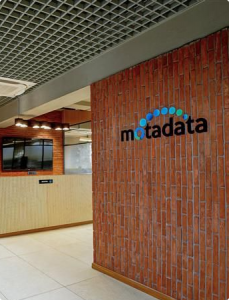Blockchain in Supply Chain Claritus IT Solutions
Supply chain processes refer to the series of activities involved in moving goods, services, and information from the source of production to the end consumers. These processes are crucial for the effective functioning of a supply chain and involve multiple stakeholders, including suppliers, manufacturers, distributors, retailers, and customers.
Here’s an overview of the key supply chain processes:
Procurement:
Procurement is the process of sourcing and acquiring the necessary raw materials, components, and services from suppliers. It involves activities such as supplier selection, negotiation, purchase order creation, and supplier relationship management.
Production:
The production process encompasses the transformation of raw materials and components into finished goods. It involves activities such as planning, scheduling, manufacturing, quality control, and managing production facilities.
Inventory Management:
Inventory management involves managing the levels of raw materials, work-in-progress (WIP), and finished goods to ensure adequate supply while minimizing excess inventory. It includes activities such as demand forecasting, order management, stock replenishment, and optimization of inventory levels.
Warehousing and Distribution:
Warehousing and distribution processes focus on the storage and movement of goods within the supply chain. This includes activities such as receiving, storing, picking, packing, and shipping products. Distribution involves selecting appropriate transportation modes, managing logistics providers, and optimizing delivery routes.
Transportation:
Transportation is a critical process that involves the physical movement of goods from one location to another. It includes selecting the most efficient modes of transportation (such as road, rail, air, or sea), carrier selection, route planning, and tracking shipments.
Demand Planning and Forecasting:
Demand planning and forecasting processes involve estimating future customer demand to ensure the right amount of inventory is available. It includes analyzing historical data, market trends, and customer insights to forecast demand accurately. This information helps in aligning production and procurement activities accordingly.
Demand Fulfillment:
Demand fulfilment focuses on meeting customer orders promptly and accurately. It involves order processing, order fulfilment, shipment tracking, and ensuring timely delivery of products to customers.
Customer Relationship Management (CRM):
CRM processes involve managing customer relationships and interactions throughout the supply chain. It includes activities such as customer segmentation, order tracking, handling inquiries and complaints, and managing customer loyalty programs.
Returns and Reverse Logistics:
This process deals with the management of returned products, repairs, and product recalls. It includes activities such as product returns handling, evaluation, repair or disposal, and managing the flow of goods backward through the supply chain.
Performance Measurement and Continuous Improvement:
This process focuses on monitoring key performance indicators (KPIs) to evaluate the effectiveness of supply chain operations. It includes analyzing metrics such as delivery performance, inventory turnover, customer satisfaction, and cost efficiency. The insights gained from performance measurement help in identifying areas for improvement and implementing corrective actions.
Overall, supply chain processes are interconnected and aim to optimize the flow of goods, services, and information across the supply chain network while meeting customer demand, reducing costs, and improving operational efficiency.
Challenges in Supply Chains
Traditional supply chain systems often face several challenges and inefficiencies that can hinder their effectiveness and impact overall operations. Here are some common challenges:
Lack of Visibility:
Many traditional supply chain systems suffer from limited visibility into inventory, demand, and logistics. This lack of real-time data and visibility across the supply chain can lead to inaccurate forecasting, stockouts, excess inventory, and inefficient decision-making.
Poor Demand Forecasting:
Inaccurate demand forecasting is a prevalent challenge. Relying on historical data alone may not capture evolving customer preferences, market trends, or unexpected disruptions. Inaccurate demand forecasts can result in inventory imbalances, stockouts, or excess inventory.
Bullwhip Effect:
The bullwhip effect refers to the amplification of demand fluctuations as they move upstream in the supply chain. Information delays, order batching, and lack of collaboration among supply chain partners contribute to this effect, leading to inventory imbalances and inefficient resource allocation.
Inefficient Inventory Management:
Traditional supply chains often struggle with suboptimal inventory management practices. This can include inadequate inventory visibility, inefficient order management, overstocking, understocking, or poor synchronization between demand and supply.
Manual Processes and Paperwork:
Many traditional supply chain systems heavily rely on manual processes and paperwork, which are time-consuming, error-prone, and lack real-time visibility. Manual data entry, order processing, and documentation can lead to delays, inefficiencies, and increased operational costs.
Lack of Collaboration:
Limited collaboration and information sharing among supply chain partners can hinder efficiency. Siloed operations and a lack of communication can result in suboptimal decision-making, order delays, and disruptions.
Inefficient Transportation and Logistics:
Inadequate transportation and logistics management can lead to delays, higher costs, and poor customer service. Inefficient routing, lack of visibility into shipment status, and suboptimal carrier selection contribute to these challenges.
Risk and Disruption Management:
Traditional supply chain systems may struggle to manage and mitigate risks and disruptions effectively. Unexpected events such as natural disasters, supplier issues, or geopolitical challenges can significantly impact the supply chain, causing delays, disruptions, and increased costs.
Lack of Sustainability and Environmental Considerations:
Many traditional supply chain systems do not adequately address sustainability and environmental concerns. This includes inefficient use of resources, excessive waste generation, and high carbon emissions.
Limited Technology Adoption:
Inefficiencies can arise from a lack of technology adoption or reliance on outdated systems. Failure to leverage advanced technologies like automation, data analytics, artificial intelligence, and IoT can limit operational efficiency and responsiveness.
Addressing these challenges requires adopting modern supply chain strategies and technologies that enhance visibility, collaboration, data-driven decision-making, and agility. By leveraging digital solutions and embracing a more integrated and proactive approach, organizations can overcome traditional supply chain inefficiencies and build a more resilient and efficient supply chain ecosystem.
Benefits of Blockchain in Supply Chains
Blockchain technology has the potential to significantly enhance transparency, traceability, and efficiency in various industries, including supply chain management. Here’s an explanation of how blockchain can achieve these benefits:
1. Transparency:
Blockchain provides a decentralized and immutable ledger that records transactions in a transparent manner. All participants in the supply chain can have access to the same information, ensuring transparency and reducing the risk of fraud or tampering. Each transaction or event is time-stamped and linked to previous transactions, creating a transparent audit trail. This transparency enables stakeholders to verify the authenticity and integrity of products, ensuring trust and accountability throughout the supply chain.
2. Traceability:
Blockchain enables end-to-end traceability of products by recording every step of their journey on the blockchain ledger. Each transaction or event, such as the movement of goods, changes in ownership, or quality inspections, is recorded as a “block” on the blockchain. These blocks are linked chronologically, forming an immutable chain of information. With this transparent and tamper-proof record, stakeholders can trace the origin, manufacturing processes, and distribution history of products. This traceability is particularly valuable for industries such as food and pharmaceuticals, where tracking the provenance and quality of products is crucial for safety and compliance.
3. Efficient Smart Contracts:
Blockchain can streamline supply chain processes through the use of smart contracts. Smart contracts are self-executing agreements with predefined rules and conditions encoded on the blockchain. They automate and enforce contract terms, eliminating the need for intermediaries and reducing administrative overhead. For example, smart contracts can automate payment settlements, trigger inventory replenishment based on predefined thresholds, or enforce compliance with quality standards. By removing manual interventions and reducing paperwork, blockchain-based smart contracts improve operational efficiency and reduce costs.
4. Enhanced Security:
Blockchain technology employs cryptographic algorithms and decentralized consensus mechanisms, making it highly secure. The distributed nature of the blockchain ensures that no single entity can control or manipulate the data. The use of cryptographic techniques provides data integrity and confidentiality. This enhanced security prevents unauthorized access, tampering, or fraud within the supply chain, fostering trust among stakeholders.
5. Streamlined Documentation and Compliance:
Traditional supply chains often involve extensive paperwork, manual verification processes, and compliance checks. Blockchain can streamline these processes by securely storing and sharing digital documents, certificates, and compliance records. This eliminates the need for manual document handling, reduces administrative burden, and facilitates faster and more accurate compliance verification.
6. Rapid Issue Resolution:
In traditional supply chains, resolving disputes, discrepancies, or issues can be time-consuming and complex. Blockchain’s transparent and tamper-proof ledger provides a single source of truth that can help quickly identify and resolve problems. Stakeholders can access the immutable records on the blockchain to pinpoint the source of an issue, trace its impact, and take necessary corrective actions, leading to faster issue resolution and reduced disruptions.
By leveraging the inherent features of transparency, traceability, efficiency, security, and automation, blockchain technology has the potential to revolutionize supply chain management. It enables stakeholders to make informed decisions based on trusted and verifiable data, streamline operations, reduce costs, and enhance overall supply chain performance.
Real-Life Use Cases
Here are a few examples of successful blockchain implementations in supply chain management:
IBM Food Trust:
IBM Food Trust is a blockchain-based solution that aims to enhance transparency and traceability in the food supply chain. It enables participants, including farmers, suppliers, distributors, and retailers, to track the journey of food products from farm to table. By recording critical information such as origin, certifications, quality inspections, and temperature records on the blockchain, IBM Food Trust helps improve food safety, reduce fraud, and streamline supply chain processes.
Maersk and IBM TradeLens:
Maersk, a global shipping company, partnered with IBM to develop TradeLens, a blockchain platform for the maritime industry. TradeLens digitizes and streamlines global trade operations by securely recording and sharing shipment data, documents, and events on the blockchain. This enhances visibility and collaboration among stakeholders, reduces paperwork, and expedites customs clearance, leading to more efficient and reliable supply chain processes.
Everledger:
Everledger utilizes blockchain technology to create a digital ledger of diamond transactions. By recording and verifying the characteristics and ownership history of each diamond on the blockchain, Everledger enhances transparency, mitigates the risk of counterfeit diamonds, and helps combat the trade of conflict diamonds. The blockchain-based platform provides a trusted and immutable record for the diamond supply chain participants.
Walmart and VeChain:
Walmart collaborated with VeChain, a blockchain platform, to implement a traceability solution for its food supply chain in China. By leveraging blockchain technology, the solution enables Walmart and its customers to trace the origin and quality of products such as pork and vegetables. The data recorded on the blockchain includes information about the farm, processing facilities, storage conditions, and transportation details. This initiative enhances food safety, improves consumer trust, and facilitates faster recalls in case of product quality issues.
De Beers Tracr:
De Beers, a prominent diamond company, developed Tracr, a blockchain platform for tracking diamonds from mine to retail. Tracr records key data points about each diamond, including its origin, cut, and quality characteristics, on the blockchain. By providing an immutable and transparent record, Tracr enhances consumer confidence, strengthens diamond provenance claims, and helps prevent the trade of conflict diamonds.
These examples highlight how blockchain technology can be leveraged to enhance transparency, traceability, and efficiency in supply chain management across various industries, including food, shipping, and luxury goods.
Future Trends and Potential
Blockchain technology continues to evolve, and there are several emerging trends and possibilities for further integration of blockchain in supply chains. Here are a few noteworthy trends:
Interoperability and Standards:
As blockchain adoption increases, there is a growing need for interoperability and standardization among different blockchain platforms and supply chain systems. Efforts are underway to develop common protocols and frameworks that enable seamless data sharing and integration across multiple blockchain networks. Interoperability will facilitate the exchange of information and transactions between various supply chain stakeholders, enhancing transparency and collaboration.
Internet of Things (IoT) Integration:
The integration of blockchain with IoT devices offers significant potential in supply chain management. IoT sensors can collect real-time data on factors such as temperature, location, humidity, and quality during the transportation and storage of goods. By recording this data on the blockchain, stakeholders can access trusted and auditable information about the conditions and handling of products throughout the supply chain. IoT integration with blockchain enhances traceability, quality control, and compliance monitoring.
Smart Contracts and Automation:
The use of smart contracts in supply chains is expected to expand. Smart contracts are self-executing agreements with predefined conditions and rules coded on the blockchain. They enable automated and secure execution of transactions, payments, and compliance checks based on predefined triggers. Smart contracts can streamline supply chain processes by automating tasks such as order fulfilment, payment settlements, and regulatory compliance, reducing administrative overhead and improving operational efficiency.
Sustainability and Ethical Supply Chains:
Blockchain technology can play a significant role in promoting sustainability and ethical practices in supply chains. By recording information about the origin, certifications, and production methods on the blockchain, stakeholders can verify the authenticity of sustainable and fair trade claims. Blockchain can help track and trace the supply of raw materials, ensuring they are sourced responsibly, and discouraging unethical practices such as child labour or environmental damage.
Supply Chain Finance and Payments:
Blockchain can facilitate efficient supply chain finance and payments by enabling secure and transparent transactions. Blockchain-based platforms can streamline trade finance processes, such as invoice factoring, supply chain financing, and letter of credit issuance. By providing a trusted and immutable record of transactions, blockchain can enhance trust between buyers and sellers, reduce fraud risks, and expedite payment settlements.
Artificial Intelligence and Data Analytics Integration:
Integrating blockchain with artificial intelligence (AI) and data analytics technologies can unlock powerful insights and predictive capabilities in supply chain management. AI algorithms can analyze blockchain data to identify patterns, trends, and anomalies, enabling better demand forecasting, inventory optimization, and risk management. Data analytics can also help identify inefficiencies and bottlenecks in the supply chain, enabling proactive decision-making and process improvements.
Regulatory Compliance and Auditing:
Blockchain can simplify regulatory compliance and auditing processes by providing a tamper-proof and transparent record of transactions and events. Regulatory agencies can access the blockchain to verify compliance with standards and regulations, reducing the need for manual audits and inspections. Blockchain’s immutable nature ensures the integrity and trustworthiness of compliance records, enhancing transparency and reducing compliance-related risks.
Finally:
These emerging trends demonstrate the potential of blockchain technology to revolutionize supply chain management further. By combining blockchain with other advanced technologies and focusing on collaboration and standardization, organizations can unlock new levels of transparency, efficiency, and trust in their supply chains.











